Jewelry made from stainless steel is flooding the market, and for good reason. It is durable, stylish, and inexpensive. 304-grade stainless steel is widely used around the world due to its durability and aesthetic. However, a lot of people who have sensitive skin or allergies wonder whether the grade 304 stainless steel is hypoallergenic. This article explores the genre of stainless steel jewelry and clarifies the facts regarding its composition and effects on the skin. Whether you are a lover of jewelry or skin skin-sensitive individual looking for solutions, this guide will help you educate yourself on all possible reliable answers. Wait as we unveil the revelation.
What is 304 Stainless Steel and Its Composition?
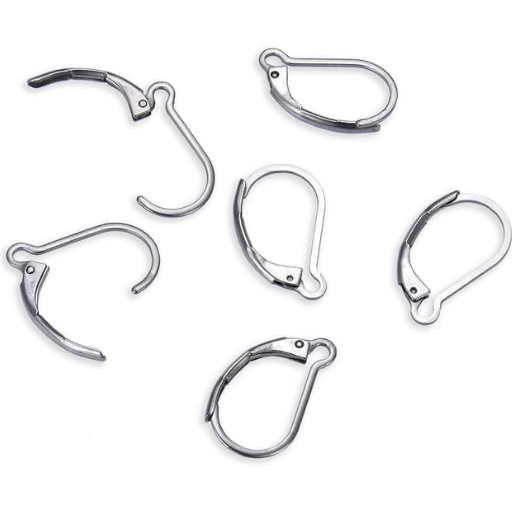
304-grade stainless steel is one of the most used metals around the world. People value it due to being highly resistant to contamination and looking aesthetically pleasing. This metal consists mostly of iron, and has 18 to 20 percent chromium and 8 to 10.5 percent nickel. Having alloyed the metal with these elements, it gains a protective rust-resistant layer due to the chromium while the nickel makes the metal stronger. Because of these reasons, it is easy to understand that 304-grade stainless steel is versatile and its applications reach jewelry, cookware, and even medical apparatus.
Composition and Properties of Stainless Steel Alloys
Stainless steel is an alloy primarily consisting of iron along with varying quantities of chromium, nickel, molybdenum, and manganese. The chromium portion of stainless steel is nearly always above 10.5%, which gives it the key feature of corrosion resistance due to the formation of a passive oxide layer over the surface. Nickel, which is usually found in grades such as 304 and 316, increases ductility, toughness, and resistance to oxidation and high temperature. Chloride and harsh acidic environments have increased susceptibility to corrosion for molybdenum-containing stainless steel variants like 316, which is further enhanced by stainless steel.
As per research, the market distribution of various grades of stainless steel differs depending on usage. for example, 304 stainless steel comprises more than 50% of global consumption, which is due to the balance it provides in terms of cost, durability, and suitability for industrial and domestic use. Grade 316, on the contrary, also accounts for up to 20% of the market, particularly in marine and other industries that deal with higher levels of acid or saline solutions.
Stainless steel alloys may be categorized according to their microstructure, as it affects the properties and applications of the alloy:
- Austenitic Stainless Steel (e.g., 304, 316): This category is distinguished by its non-ferromagnetic property, which allows for easy forming. It is well-suited for applications where flexibility and high corrosion resistance are required.
- Ferritic Stainless Steel (e.g., 430): These steels are magnetic, lower-cost, and resistant to stress corrosion but perform poorly under high-temperature conditions.
- Martensitic Stainless Steel (e.g., 410): Martensitic stainless steel is well-known for its high strength and hardness but, comparatively lower corrosion resistance. Hence, they are mostly used in knives, tools, and turbine blades.
According to research, global demand for stainless steel is expected to grow by around 4-5% annually, with emerging applications in renewables, healthcare, and construction. This is indicative of the alloy’s demand and versatility, along with its significant role in modern technologies.
Does 304 Stainless Steel Contain Nickel?
Correct, Nickel is vital to 304 stainless steel since it improves the strength and oxidation resistance of the alloy. Also, Nickel, together with Iron, increases corrosion resistance of toughs, toughness, and durability of the alloy. And, as with most stainless steels, the 304 grade has approximately the following composition:
- Iron (Fe): Contained at about 66-74%, which is the base element of the alloy.
- Chromium (Cr): 18-20% is present, which aids in combating corrosion.
- Nickel (Ni): is found in the range of 8-10.5% which aids in fighting corrosion and makes the alloy lot stronger.
- Carbon (C): Maintains the rigidity of the stainless steel. It is contained in 0.08% only.
- Manganese (Mn): Strength and wear resistance are boosted. Usually around 2%.
The reason as to why these balanced elements are maintained is to make the 304 grade applicable in several sturctural uses. Hence, thw alloy is is one of the most common and versatile used alloys in many industries.
Properties of 304 Grade Stainless Steel
304 Grade stainless steel exhibits remarkable characteristics such as resistance to corrosion in many different environments, good oxidation resistance, high ductility, and flexibility to processes like bending and forming.
Is 304 Stainless Steel Hypoallergenic?
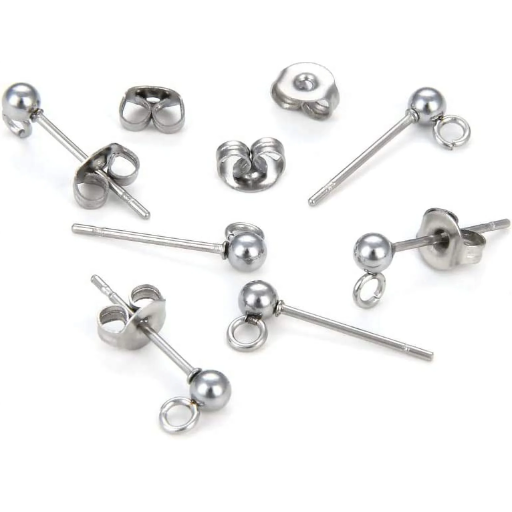
In general, my answer is yes. Most individuals do not find 304 stainless steel hypoallergenic as its nickel content is low which enables lesser chances of allergic reactions. That being said, it is important to note that stainless steel 304 can be dangerous for those with harsh sensitivity to nickel, as any prolonged direct contact could provoke serious consequences.
Can 304 Stainless Steel Cause an Allergic Reaction?
But yes, stainless steel 304 can trigger allergic reactions. When it comes to me, 304 stainless steel is safe for the majority as it contains low levels of nickel. Having said that, if you are someone with a nickel allergy, then there is a hint of possibility that you will be sensitive to stainless steel 304. In that case, it is best to get evaluated by a physician.
Comparing 304 and 316L Stainless Steel for Sensitivity
| Parameter | 304 Stainless Steel | 316L Stainless Steel |
|---|---|---|
| Corrosion Resistance | General corrosion resistance | Higher resistance to chloride and acids |
| Nickel Content | 8-10.5% | 10-14% |
| Molybdenum Content | None | 2-3% |
| Cost | Lower cost | Higher cost |
| Applications | General use: food, dairy, brewing | Marine, pharmaceutical, and chemical applications |
Exploring Hypoallergenic Properties of Stainless Steel
| Key Point | Details |
|---|---|
| General Hypoallergenic | Stainless steel is generally hypoallergenic. |
| Nickel Content | Higher grades (e.g., 316L) have reduced nickel release. |
| Medical Grade | 316L is widely used for medical implants. |
| Allergic Reactions | Possible for individuals with severe nickel sensitivity1. |
| Surface Treatment | Polishing and coatings reduce allergen release. |
| Best Grades | 316L and 18/10 stainless steel are the most hypoallergenic. |
| Applications | Jewelry, medical devices, and kitchenware. |
| Maintenance | Clean and dry to minimize reactions. |
How to Choose the Right Stainless Steel for Sensitive Skin?
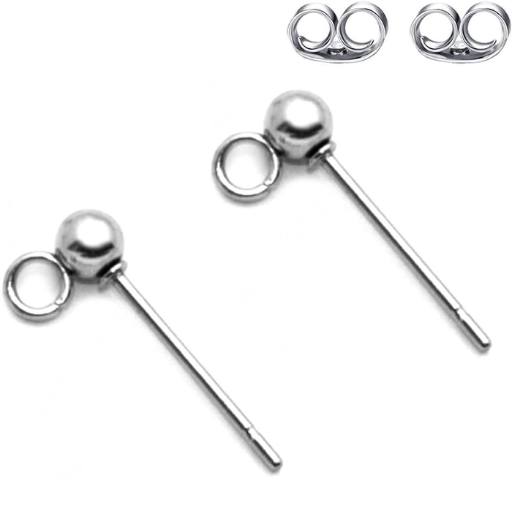
Do you know how to choose stainless steel for sensitive skin? If your skin is sensitive to nickel, focus on lower nickel-containing stainless steels. The best option is usually 316L stainless steel, because it has a lower nickel content than 304 stainless steel, and was designed to be less irritating. Also, make sure to check for silver labeled ‘hypoallergenic’ or ‘surgical grade’ as these have better guarantees. For those with severe nickel allergies, it’s best to speak with a dermatologist or allergist first before buying any stainless steel. The stainless steel has to be compatible with their skin. Make sure to choose reputable sources or brands.
Benefits of Hypoallergenic Stainless Steel
- Reduced Risk of Skin Irritation
In hypoallergenic stainless steel, the nickel concentration is purposely brought down, making it less likely to cause allergic reactions. A great selection for individuals with hypersensitive skin and metal allergies, it ensures these folks are safe.
- Durability and Longevity
Keeping its appearance and efficiency over time, this type of stainless steel is best known for withstanding corrosion, tarnishing, and other forms of wear. This kind of steel is great for daily use and long-term wear.
- Easy Maintenance
To preserve its hygienic qualities, hypoallergenic stainless steel should not be subjected to frequent, rigorous cleaning, as simply washing it with soap and water is usually sufficient to retain its shine.
- Versatility for Skin Types
With metals that come in direct contact with someone’s body such as in jewelry, medical utensils, and implants, hypoallergenic stainless steel is the go-to choice. Because it is suitable for a host of skin types and allergies, even those who have the worst skin allergies can sleep easily.
- Affordability
Hypoallergenic stainless steel surpasses platinum and titanium when talking about affordability, all while ensuring the same safety standards, making it accessible for people who require a balance of low cost and high reassurance.
Understanding Metal Allergies and Hypoallergenic Options
| Key Point | Details |
|---|---|
| What is Metal Allergy? | Immune reaction to specific metal ions. |
| Common Allergenic Metals | Nickel, chromium, cobalt, and copper. |
| Symptoms of Allergy | Redness, itching, rash, eczema, irritation. |
| Nickel Allergy Sensitivity | A common cause of metal-related allergies. |
| Hypoallergenic Definition | Materials are less likely to cause allergic reactions. |
| Best Hypoallergenic Metals | Titanium, niobium, and 316L stainless steel. |
| 316L Stainless Steel | Minimal nickel release, widely used in medical devices. |
| Titanium Properties | Completely nickel-free, lightweight, strong, and biocompatible. |
| Niobium Uses | Soft, allergen-free, customizable colors for jewelry. |
| Metal Alloys and Allergies | Higher nickel content increases the risk of skin reactions. |
| Jewelry Recommendations | Look for hypoallergenic labels or nickel-free metals. |
| Surface Coatings | Reduce metal ion release and prevent skin contact. |
| Maintenance Tips | Clean regularly, avoid prolonged moisture or sweat exposure. |
| Alternative Metals | Platinum, tantalum, or pure 24K gold minimizes allergens. |
| Applications of Hypoallergenic Metals | Jewelry, medical implants, kitchenware, and electronics. |
The Role of Nickel-Free Stainless Steel
| Key Point | Details |
|---|---|
| What is Nickel-Free Steel? | Stainless steel with negligible or no nickel content. |
| Allergy Prevention | Reduces risk for nickel-sensitive individuals. |
| Corrosion Resistance | Excellent in varied environments, resists rust. |
| Health Applications | Safe for medical devices and implants. |
| Jewelry Use | Popular for hypoallergenic accessories. |
| Durability | Strong, wear-resistant, and long-lasting. |
| Maintenance Ease | Easy to clean and maintain shine. |
| Eco-Friendly | Recyclable and reduces the nickel mining impact. |
| Cost Benefits | Affordable alternative to precious hypoallergenic metals. |
| Popular Grades | Includes 316L and titanium-enriched variants. |
| Kitchenware and Tools | Safe option for food preparation and utensils. |
| Industrial Applications | Reliable for machinery in sensitive environments. |
| Surface Features | Smooth, polished surfaces minimize irritation. |
| Sustainability | Supports reducing allergenic materials globally. |
What Makes 316L Stainless Steel Different?
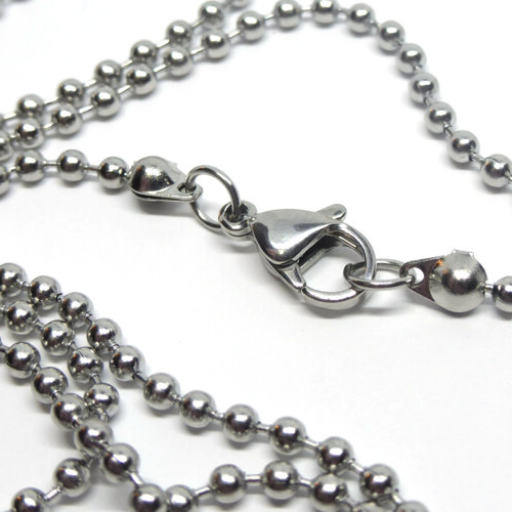
316L stainless steel differs from standard 316 stainless steel due to its increased resistance to corrosion, which can be attributed to its lower carbon content. Also, it is deemed to be a better choice for individuals with metal allergies, because the high purity and low nickel content minimizes the potential of allergic reactions. Due to its strength, biocompatibility, ability to withstand corrosion, and being hypoallergenic, 316L stalinless steel is ideal for instruments in the medical field, jewelry, and other sensitive-need places.
Why 316L is Known as Surgical Stainless Steel
Surgical stainless steel is the nickname given to 316L as it has exceptional biocompatibility. This means it can safely interact with the human body without triggering negative reactions. Bodily fluids can corrode implants and medical instruments, but 316L stainless steel does not corrode, thus making it preferred. Furthermore, the low nickel content means that the risk of allergic responses is lower, making it more reliable and safe for surgical procedures.
Comparing the Corrosion Resistance of 304 and 316L
| Key Point | 304 Stainless Steel | 316L Stainless Steel |
|---|---|---|
| Chromium Content | 18-20%, provides basic corrosion resistance | 16-18%, enhanced with molybdenum |
| Nickel Content | 8-10.5%, moderate nickel release | 10-14%, lower nickel release |
| Molybdenum Presence | Absent, less effective against chlorides | 2-3%, better protection in saline environments |
| Saltwater Resistance | Prone to pitting and corrosion | Excellent resistance to saltwater |
| Weldability | Good but susceptible to carbide precipitation | Low-carbon variant enhances weldability |
| High-Temperature Strength | Performs well in moderate temperatures | Better resistance at high temperatures |
| Cost | More affordable, widely used | Higher cost due to molybdenum addition |
| Applications | Kitchenware, industrial equipment | Marine, chemical, and medical industries |
| Corrosion in Chlorides | Susceptible to chloride pitting | Resistant to chloride-induced pitting |
| Durability in Acidic Media | Moderate resistance | High resistance to acidic and harsh environments |
316L’s Hypoallergenic Properties in Medical Implants
316L stainless steel is one of the most trusted alloys for use in medical implants and surgical tools because of its hypoallergenic properties. Its nickel content compared to 304 stainless steel means that the risk of suffering from a nickel allergy or reaction, which is one of the most prevalent metal allergies, is greatly reduced. In current times, almost 10 to 15% of the population has been shown to suffer from nickel allergies, showing that the hypoallergenic elements of 316L are extremely beneficial for those patients who undergo surgery.
316L also contains molybdenum, which helps 316L avoid corrosion in addition to keeping strength and durability at extreme conditions like the saline atmosphere of human bodies. Clinical trials have shown that for 316L implants, complications like irritation, allergy, and implant rejection are observed far less compared to those made from other alloy implants. With its hypoallergenic properties, 316L stainless steel is ideal for use in orthopedics, cardiovascular implants, and dental surgery as it has unparalleled biocompatibility.
By enabling the customization of implants to specific physiologic requirements through 3D printing, advanced manufacturing technologies like 316L stainless steel 3D printing improve its functionality while still preserving, its chemically stable, non-reactive, and hypoallergenic nature. This attributes maximum possible safety and comfort to patients, thereby underscoring 316L’s medical grade materials supremacy.
Are There Other Hypoallergenic Metals to Consider?
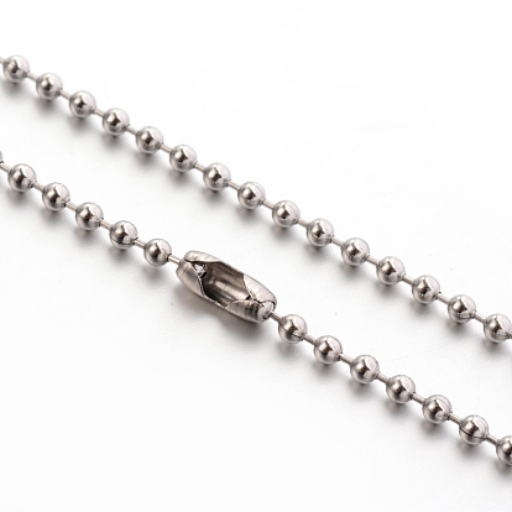
Other hypoallergenic metals can be found as well. Titanium, along with its alloys, is well-known for its biocompatibility and high resistance to corrosion, making them popular implant and jewelry metals. Niobium is also considered a hypoallergenic metal, with frequent use in delicate applications thanks to its inert nature. Both metals present safe choices, absent the risk for allergies or hypersensitivity to materials.
Alternatives to Stainless Steel Jewelry
If you search for alternatives to stainless-steel jewelry, you will come across some amazing options that target different styles and even preferences. These are five hypoallergenic yet durable materials, and a few details about them:
- Titanium
A titanium piece of jewlery or medical implant can give one a sleek look as the metal is highly stylish. Besides that, it is also extremely lightweight and durable while being corrosion resistant. Given that titanium base metal jewelry are less costly and available in numerous finishes such as polished or matte, they can be very cost effective.
- Niobium
Body jewlery often utilizes niobium as not only it is corrosion resistant but also medically inert so there are no bio reactions. The alloys can also be anodized which allows them to have a lot of color making them very visually attractive. This is very appriciated by those who suffer from metal allergies.
- Platinum
People often choose platinum for wedding bands and fine jewlery since it neither tarnishes nor palladiunises making it a fine choice. Having hypoallergenic qualities, platinum also happens to be visually stunning and show exceptional durability. This ban is ideal for anyone looking for tattoos. Since it is not easy to mine, it makes the metal highly expensive while its strength does help sustain the cost.
- Sterling Silver (Free of Nickel)
Jewelry makers who look for sterling silver devoid of nickel make sterling silver jewelry with 92.5% pure silver and copper. This silver alloy is skin-friendly while preserving the allure of silver, and, with some care, it does not tarnish.
- Gold (14K or Above, Free of Nickel)
Jewelry made of gold with 14 karats and above, and devoid of nickel, are allergy free and appealing due to their enduring beauty. Options include yellow gold, white gold, and rose gold. Alluring rose gold has copper which makes them more durable and less likely to irritate the skin than other golds.
These materials, unlike stainless steel, provide an elegant touch with sensitivity, which increases the appeal of these proven nonsensitive materials.
Exploring Hypoallergenic Materials Beyond Steel
| Key Point | Details |
|---|---|
| Titanium Properties | Completely nickel-free, lightweight, and highly durable. |
| Niobium Uses | Biocompatible, soft, and customizable for jewelry. |
| Platinum Benefits | Hypoallergenic, tarnish-resistant, suitable for jewelry. |
| Gold Alloys | 24K gold is the least reactive, lower alloys may vary. |
| Tantalum Applications | Durable, biocompatible, and resistant to corrosion. |
| Palladium Features | Lightweight, hypoallergenic, and maintains a shiny finish. |
| Zirconium Traits | Nickel-free, corrosion-resistant, and great for implants. |
| Ceramic Materials | Non-metallic, inert, and widely hypoallergenic. |
| Silicone Qualities | Soft, flexible, and ideal for sensitive skin. |
| High-Grade Plastics | BPA-free, safe for medical and food applications. |
Choosing the Best Stainless Steel for Jewelry
| Key Point | Details |
|---|---|
| Best Grades for Jewelry | 316L and 304 are the most popular choices. |
| Nickel Sensitivity | 316L has reduced nickel, ideal for sensitive skin. |
| Corrosion Resistance | 316L offers superior rust resistance over 304. |
| Durability | Both grades are durable and scratch-resistant. |
| Finish and Appearance | Can be highly polished or brushed for aesthetics. |
| Hypoallergenic Properties | 316L is more hypoallergenic than 304. |
| Maintenance | Easy to clean, resists tarnish and discoloration. |
| Cost Considerations | 304 is more affordable, 316L is pricier. |
| Suitability for Engraving | Both grades allow engraving and, durable finish effect. |
| Applications | Rings, bracelets, necklaces, and watch bands. |
References
- Academia.edu: Allergy to Hypoallergenic Metals – This source discusses hypersensitivity reactions to metals, including stainless steel.
- University of Wisconsin-Madison: Wound Edge Approximation – BME Design Projects – Highlights the inert nature of 304 stainless steel and its safety for use in medical applications.
- PubMed Central (PMC): Art of prevention: A piercing article about nickel – Discusses the use of low-nickel-releasing stainless steel in applications like piercings, relevant to hypoallergenic concerns.
Frequently Asked Questions (FAQ)
Q: What type of stainless steel is commonly used for hypoallergenic jewelry?
A: The most common type of stainless steel used for hypoallergenic jewelry is 316 stainless steel. This stainless steel grade is less likely to cause allergic reactions due to its lower amount of nickel.
Q: Is 304 stainless steel truly hypoallergenic?
A: While 304 stainless steel is widely used, it is not as hypoallergenic as 316 stainless steel. The amount of nickel in 304 stainless steel can cause reactions in individuals with sensitive skin.
Q: What are the benefits of stainless steel in jewelry?
A: Stainless steel’s benefits include its durability, resistance to corrosion, and affordability. It is also considered more hypoallergenic than many other metals, making it suitable for sensitive skin when choosing the right type.
Q: How does the composition of stainless steel affect its hypoallergenic properties?
A: The composition of stainless steel, particularly the amount of nickel, plays a significant role in whether stainless steel is hypoallergenic. Lower nickel content generally means the steel is hypoallergenic and suitable for sensitive skin.
Q: What should I consider when choosing stainless steel jewelry to ensure it is hypoallergenic?
A: When choosing stainless steel jewelry, look for pieces made from 316 stainless steel, as it is more hypoallergenic and suitable for sensitive skin. You can also find tips for choosing hypoallergenic jewelry by checking for nickel-free labels.
Q: Is stainless steel an alloy?
A: Yes, stainless steel is an alloy composed primarily of iron, chromium, and nickel. Its composition varies depending on the specific type of stainless steel, affecting its properties and suitability for different applications.
Q: Why is stainless steel resistant to corrosion?
A: Stainless steel is resistant to corrosion due to the presence of chromium, which forms a protective layer on the surface. This layer prevents rust and corrosion, making stainless steel a durable option for jewelry.
Q: What is the difference between 304 and 316 stainless steel?
A: The main difference between 304 and 316 stainless steel is the amount of nickel and the addition of molybdenum in 316 stainless steel. These differences make 316 more resistant to corrosion and more hypoallergenic than 304.
Q: Can I find hypoallergenic or nickel-free stainless steel jewelry?
A: Yes, many jewelers offer hypoallergenic or nickel-free stainless steel jewelry, particularly those made from 316 stainless steel. Always check the product details to ensure it meets your sensitivity needs.
Q: Is stainless steel jewelry suitable for all skin types?
A: Stainless steel jewelry, especially those made from 316 stainless steel, is generally suitable for most skin types, including sensitive skin. However, individuals with severe nickel allergies should always verify the specific type of stainless steel used.







